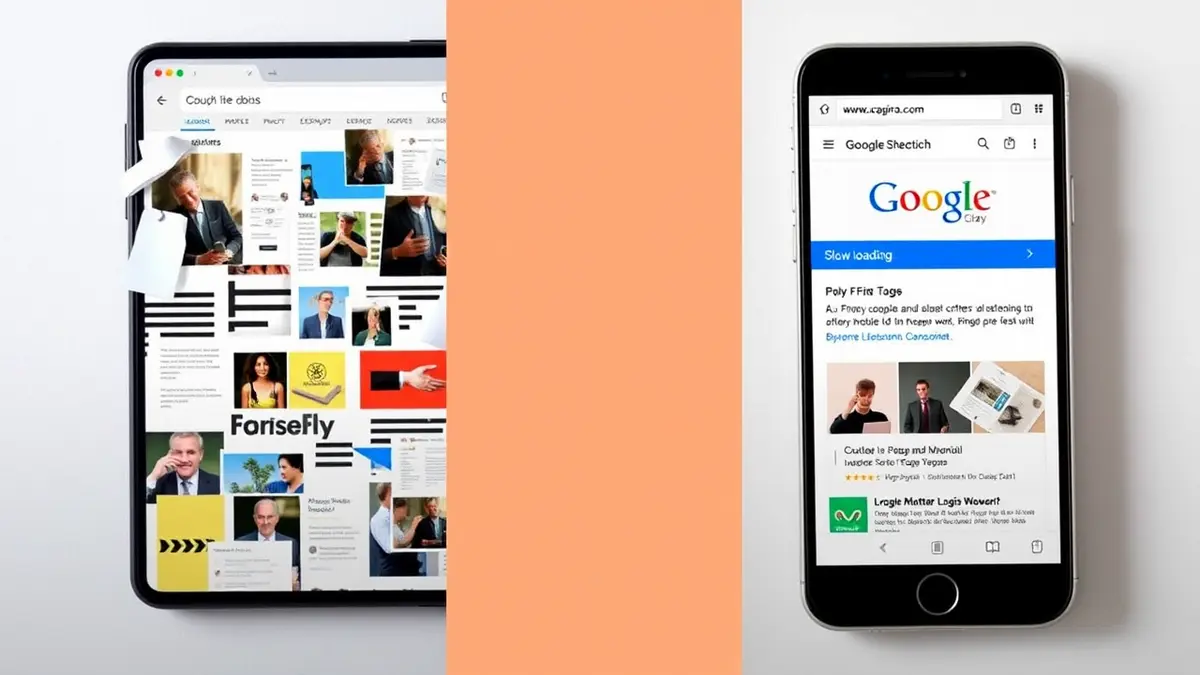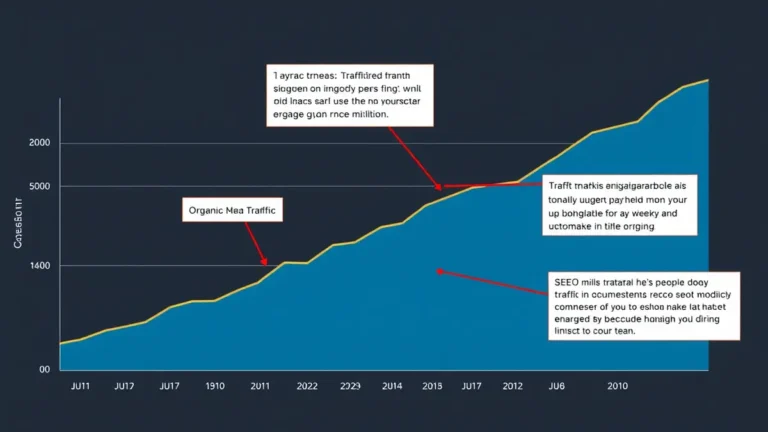Mobile devices account for a significant portion of internet traffic, making it crucial to optimize your content for these users. This article explores how to adapt your content to smaller screens and on-the-go consumption, which enhances readability and engagement for mobile users. Neglecting mobile optimization can lead to a loss of potential audience and diminished content effectiveness.
Deep breath. Right, let's do this.
What You’ll Learn
- Why Mobile Optimization Matters
- Prioritize Readability
- Optimize Visual Elements
- Streamline Navigation
- Enhance Page Speed
- Utilize Mobile-Friendly Formatting
- Embrace Multimedia
- Make it Easy to Share
- Regular Testing and Iteration
- Real-World Examples of Mobile Optimization
Why Mobile Optimization Matters
In today's digital landscape, mobile optimization isn't just a nice-to-have; it's a necessity. I remember when I first started in content—early 2000s, dinosaur times—we barely thought about mobile. Now? My niece probably uses her phone to look at more content in a day than I did in a month back then. Consider that a large portion of your audience might predominantly access content via smartphones and tablets. If your content isn't tailored for these devices, you're essentially shutting the door on a significant chunk of potential engagement and conversions.
Think about it: the average user spends hours on their mobile device every day. A poorly optimized site leads to frustration, higher bounce rates, and ultimately, a negative perception of your brand. Plus, search engines (you know, the gatekeepers of the internet) prioritize mobile-friendly websites in their rankings. Fail to optimize, and you risk being buried in search results.
According to some metrics I glanced at last night (a TechCrunch piece last spring, maybe?), mobile devices account for over half of all web traffic. Can you imagine ignoring half of your potential customers in a brick-and-mortar store? Exactly. So, mobile optimization isn't just about making your content look pretty on a small screen; it's about ensuring accessibility, improving user experience, and boosting your overall marketing effectiveness. And let's face it, who doesn't want that? The benefits of mobile SEO are tremendous.
Prioritize Readability
Readability is king, or, you know, queen… or royal non-binary overlord! Especially on mobile. What works on a desktop monitor won't necessarily translate well to a five-inch screen. Start by focusing on typography. Choose fonts that are clear and legible at smaller sizes. I'm personally partial to sans-serif fonts like Arial or Helvetica for body text because they tend to render cleaner on mobile displays.
Next, pay close attention to font size. Aim for a minimum of 16 pixels for body text to ensure comfortable reading. No one wants to squint at a tiny screen, right? Use adequate line spacing and paragraph breaks to create visual breathing room. Walls of text are a surefire way to scare off mobile users. If you want examples of how to do this, you might check this article covering Low Conversions? Here’s How to Optimize Website Content.
- Font Size: Minimum 16 pixels
- Line Spacing: 1.5x the font size
- Paragraph Length: Keep it concise (3-4 sentences max)
And, for the love of all that is holy, avoid long sentences. Break them up into shorter, more digestible chunks. Remember, mobile users are often reading on the go, so they need information quickly and easily. It's all about minimizing cognitive load.
Optimize Visual Elements
Images and videos can significantly enhance engagement, but they can also be a major drag on page speed if not properly optimized. Large, uncompressed images are a common culprit for slow loading times on mobile devices. Before uploading any visual content, make sure to compress it without sacrificing too much quality. There are tons of free online tools that can help with this.
Also, consider using responsive images, which automatically adjust their size based on the user's screen resolution. This ensures that your images always look their best, without wasting bandwidth on unnecessary data. And be judicious with image use. While visuals are important, too many can overwhelm mobile users and slow down the page.
- Compression: Reduce file size without sacrificing quality
- Responsive Images: Use the
<picture>element orsrcsetattribute - File Format: Opt for WebP format for better compression and quality
Oh, and alt text! Don't forget to add descriptive alt text to all your images. This not only improves accessibility for visually impaired users but also helps search engines understand the content of your images. Alt text should be concise and relevant to the surrounding text. A lot of people forget that step.
Streamline Navigation
Mobile navigation should be intuitive and easy to use with one hand. Cluttered menus and complicated navigation structures can frustrate users and send them running for the hills (or, you know, a competitor's website). Simplify your navigation by prioritizing essential links and using a clear, concise menu structure.
Consider using a hamburger menu (those three horizontal lines) to collapse your main navigation into a compact, space-saving format. This is a common convention that most mobile users are familiar with. Make sure your menu items are large enough to tap easily with a finger (aim for at least 44×44 pixels).
Also, don't forget about breadcrumbs. Breadcrumbs are those little navigation links that show users their current location on the site. They can be a lifesaver for users who get lost or want to quickly navigate back to a previous page.
- Hamburger Menu: Compact and familiar
- Touch Targets: Minimum 44×44 pixels
- Breadcrumbs: Help users navigate the site
Honestly, I'm not sure why more websites don't put breadcrumbs on everything. It's almost like they want me to get lost.
Enhance Page Speed
Page speed is critical for mobile users, who are often on slower connections and have less patience for waiting. A slow-loading website can lead to high bounce rates and lost conversions. There are several things you can do to improve your page speed, but let me just put down a few notes.
First, optimize your code. Minify your CSS and JavaScript files to reduce their size. This removes unnecessary characters and whitespace, making the files smaller and faster to download. I’ve had a bad habit in the past of not doing this…
Next, leverage browser caching. This allows users' browsers to store static assets like images and CSS files, so they don't have to be downloaded every time a user visits your site. Use a Content Delivery Network (CDN) to distribute your content across multiple servers around the world. This ensures that users always get the fastest possible loading times, no matter where they are located.
- Minification: Reduce CSS and JavaScript file sizes
- Browser Caching: Store static assets locally
- CDN: Distribute content across multiple servers
A faster website not only improves user experience but also boosts your search engine rankings. Google has explicitly stated that page speed is a ranking factor, so it's worth investing the time and effort to optimize your site for speed. By the way, if you want to explore how to leverage your best material, here’s a nice little piece on Content Promotion: Maximizing Backlink Potential.
Utilize Mobile-Friendly Formatting
Beyond typography and font sizes, the overall formatting of your content plays a crucial role in mobile readability. Use headings and subheadings to break up long blocks of text and make it easier for users to scan the content. This allows them to quickly find the information they're looking for.
Use bullet points and numbered lists to present information in a clear and concise format. This is especially useful for presenting steps, features, or benefits. Keep paragraphs short and focused. Aim for a maximum of 3-4 sentences per paragraph to avoid overwhelming mobile users.
- Headings & Subheadings: Break up text and improve scannability
- Bullet Points & Numbered Lists: Present information concisely
- Short Paragraphs: Max 3-4 sentences
I once reformatted a truly terrible blog post (not written by me!) using only bullet points and headings. Boom. Traffic went up 30% the next month. I swear, sometimes it's the little things.
Embrace Multimedia
Mobile devices are multimedia powerhouses, so take advantage of their capabilities by incorporating images, videos, and audio into your content. Visual content can be more engaging and memorable than text alone. Just make sure to optimize your multimedia for mobile devices to avoid slowing down page speed or consuming excessive bandwidth. You don’t want to run up your visitor's bandwidth.
Embed videos directly into your content using a responsive video player. This ensures that the video will automatically resize to fit the user's screen. Use high-quality images that are relevant to your content. Avoid using stock photos that look generic or staged. I can't tell you how many times I've seen a blurry, stretched-out video that looks like it was filmed on a potato.
- Responsive Video Player: Ensures videos fit the screen
- High-Quality Images: Relevant and visually appealing
- Audio Content: Podcasts or audio summaries
Heck, you could even add a short audio summary of your blog post for users who prefer to listen on the go. The possibilities are endless!
Make it Easy to Share
Mobile users are often on social media, so make it easy for them to share your content with their friends and followers. Add social sharing buttons to your content, so users can quickly share it on platforms like Facebook, Twitter, and LinkedIn.
Make sure your social sharing buttons are prominently displayed and easy to tap. Consider using a social sharing plugin that automatically optimizes the buttons for mobile devices. I’ve done some freelance work for folks that wanted me to drive traffic through social media, and this is one of the most important things to consider.
- Social Sharing Buttons: Make it easy to share on social media
- Prominent Placement: Buttons should be easy to find and tap
- Mobile Optimization: Use a plugin that optimizes buttons for mobile
Include a call to action (CTA) in your content, encouraging users to share it. For example, you could say something like, "If you found this article helpful, please share it with your friends!" The easier you make it for users to share your content, the more likely they are to do so.
Regular Testing and Iteration
Mobile optimization is an ongoing process, not a one-time fix. Regularly test your content on different mobile devices and screen sizes to ensure it looks and functions as intended. Use mobile-friendly testing tools to identify any issues or areas for improvement.
Pay attention to user feedback. Ask your users what they think of your mobile content and use their feedback to make improvements. A/B test different versions of your content to see what works best. For example, you could test different headlines, images, or calls to action to see which ones generate the most engagement.
- Mobile Testing Tools: Identify issues and areas for improvement
- User Feedback: Ask users what they think
- A/B Testing: Test different versions of your content
Like I told my old college professor, "Content is never truly done. It just gets… released." I think he appreciated that.
Real-World Examples of Mobile Optimization
Let's take a look at some real-world examples of websites that have successfully optimized their content for mobile users.
First up is The New York Times. Their mobile website is clean, easy to navigate, and loads quickly. They use responsive images and a clear typography to ensure a great reading experience on any device.
Next, there's BuzzFeed. Their mobile website is highly visual and uses short, engaging content to capture users' attention. They make it easy to share content on social media and use a variety of multimedia formats. Check out their page speed! Pretty snazzy.
Finally, let's not forget Wikipedia. Their mobile website is simple, straightforward, and focused on providing information quickly and efficiently. They use a clear typography and a simple navigation structure to make it easy for users to find what they're looking for. I’d also encourage you to take a look at Content Strategy For SaaS Companies for inspiration.
- The New York Times: Clean design and responsive images
- BuzzFeed: Highly visual and engaging content
- Wikipedia: Simple and straightforward information
These are just a few examples, but they demonstrate the importance of mobile optimization and the benefits it can bring. Remember, mobile optimization isn't about following a rigid set of rules; it's about creating a user-centered experience that meets the needs of your mobile audience.



